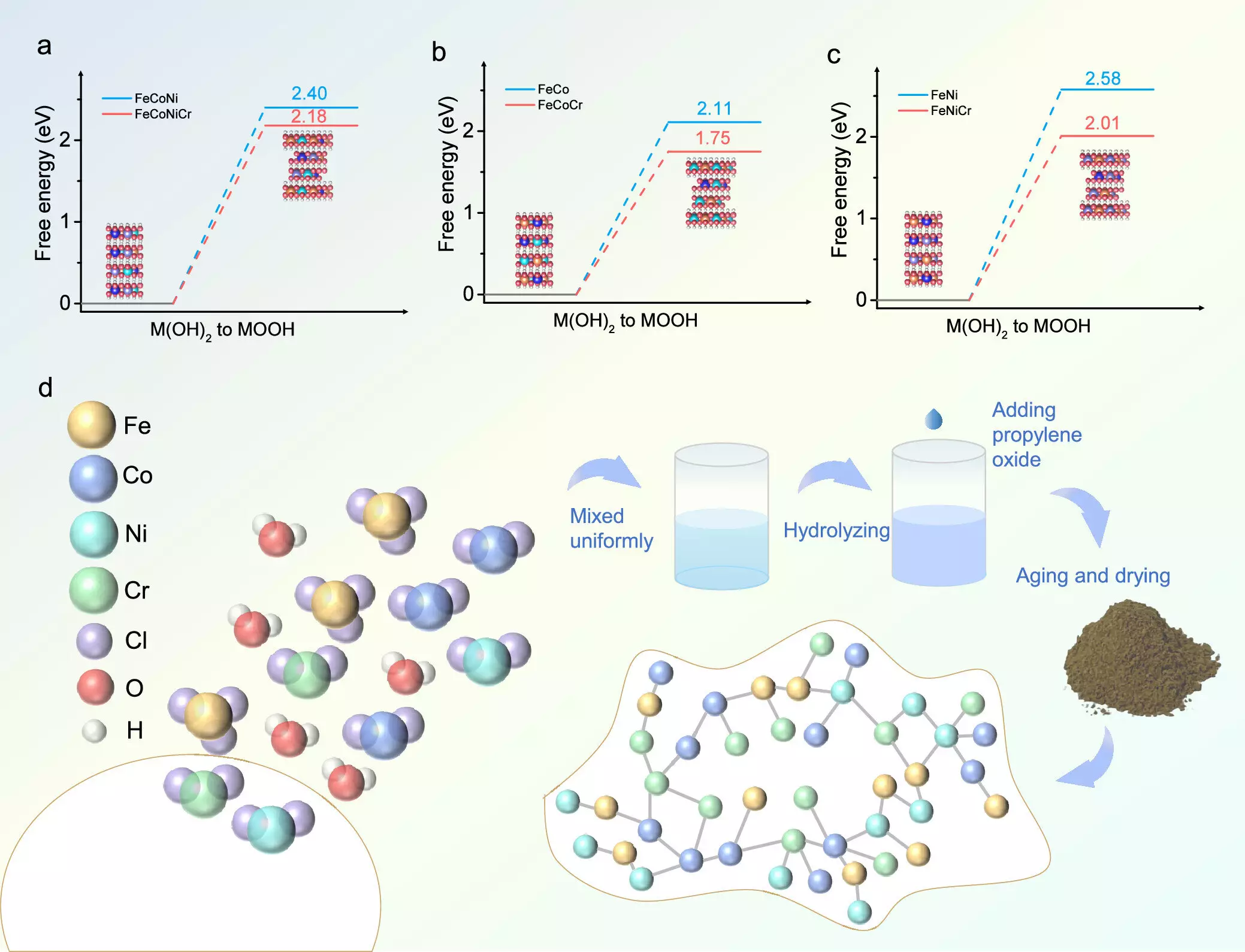The quest for renewable energy solutions has become increasingly urgent as fossil fuel resources dwindle and climate change concerns mount. Among the myriad of technologies aimed at harnessing clean energy, the electrolysis of water stands out as a promising method for hydrogen production. Central to this process is the oxygen evolution reaction (OER), which has historically been hampered by the sluggish kinetics of reaction rates. To address these challenges, researchers have turned their attention to synthesizing novel, cost-effective catalysts that promise not only enhanced efficiency but also greater stability in operational conditions.
A dynamic team of scientists has made strides in this arena by integrating chromium into transition metal hydroxides. Published in August 2024 in ACS Catalysis, their research leverages theoretical frameworks and empirical methodologies, showcasing how chromium doping can dramatically enhance catalytic performance. “Our findings underscore the importance of phase transitions in catalysis,” stated Hao Li, from Tohoku University’s Advanced Institute for Materials Research. The synthesis of a FeCoNiCr hydroxide catalyst via an aqueous sol-gel approach resulted in an extraordinary catalytic response, evidenced by a low overpotential of 224 mV in alkaline conditions—setting a new benchmark against similar catalyst formulations.
Delving deeper into the mechanisms at play, the incorporation of chromium appears to optimize the electronic characteristics of the catalyst, particularly by fine-tuning the adsorption energies of OER intermediates. This meticulous adjustment enhances the material’s overall efficiency, allowing for faster reaction rates. Bader charge analysis provided valuable insights, revealing that the metallic constituents, nickel and cobalt, retained a stable +3 oxidation state throughout the OER process. This stability is crucial, as it ensures sustained catalytic activity over prolonged periods—an essential requirement for practical applications in energy systems.
The implications of this research extend beyond the laboratory. The performance of a zinc-air battery assembled using the newly developed catalyst demonstrated robust functionality, operating for 160 hours with a low charge-discharge voltage difference of 0.70 V. These promising results indicate that such catalysts could facilitate the economical storage and conversion of renewable energy, particularly from erratic sources like solar and wind. As the world pursues cleaner energy solutions, catalysts offering both performance and durability become crucial.
As researchers set their sights on refining catalyst design, the focus will also be on exploring other elements that could further enhance performance metrics. “Our study establishes a framework for rapid material screening and catalyst optimization,” stated Di Zhang, an assistant professor at WPI-AIMR. With ambitions to escalate the effectiveness of clean energy technologies, the ultimate goal remains clear: to develop sustainable catalysts that can accelerate the transition towards a hydrogen-based economy.
As global energy demands shift towards sustainable solutions, the journey of developing affordable and efficient catalysts represents a crucial linchpin in the advancement of renewable energy systems. This pioneering research highlights the potential of chromium-enhanced catalysts to not only elevate the OER but also inspire further innovations in catalyst technology.


Leave a Reply